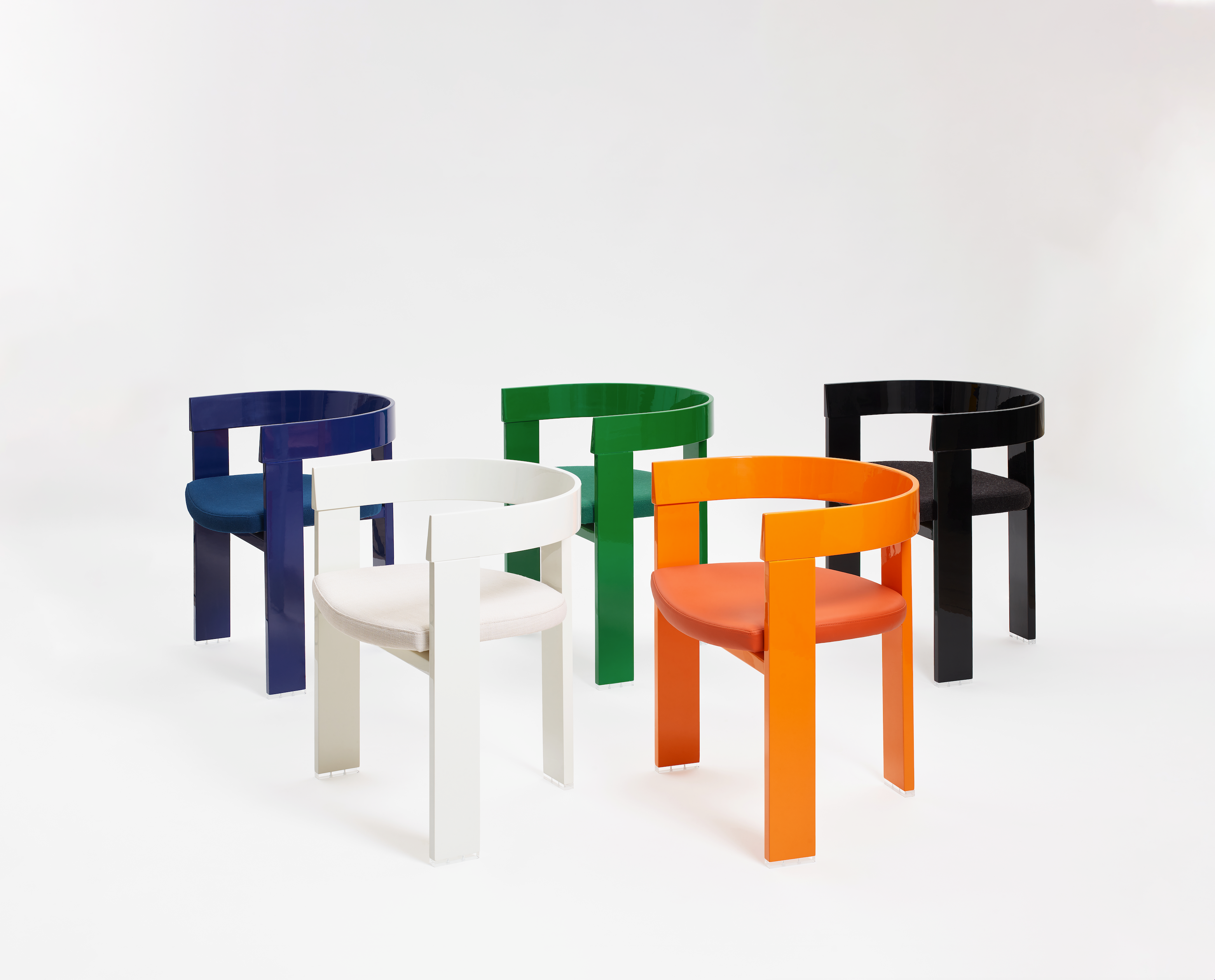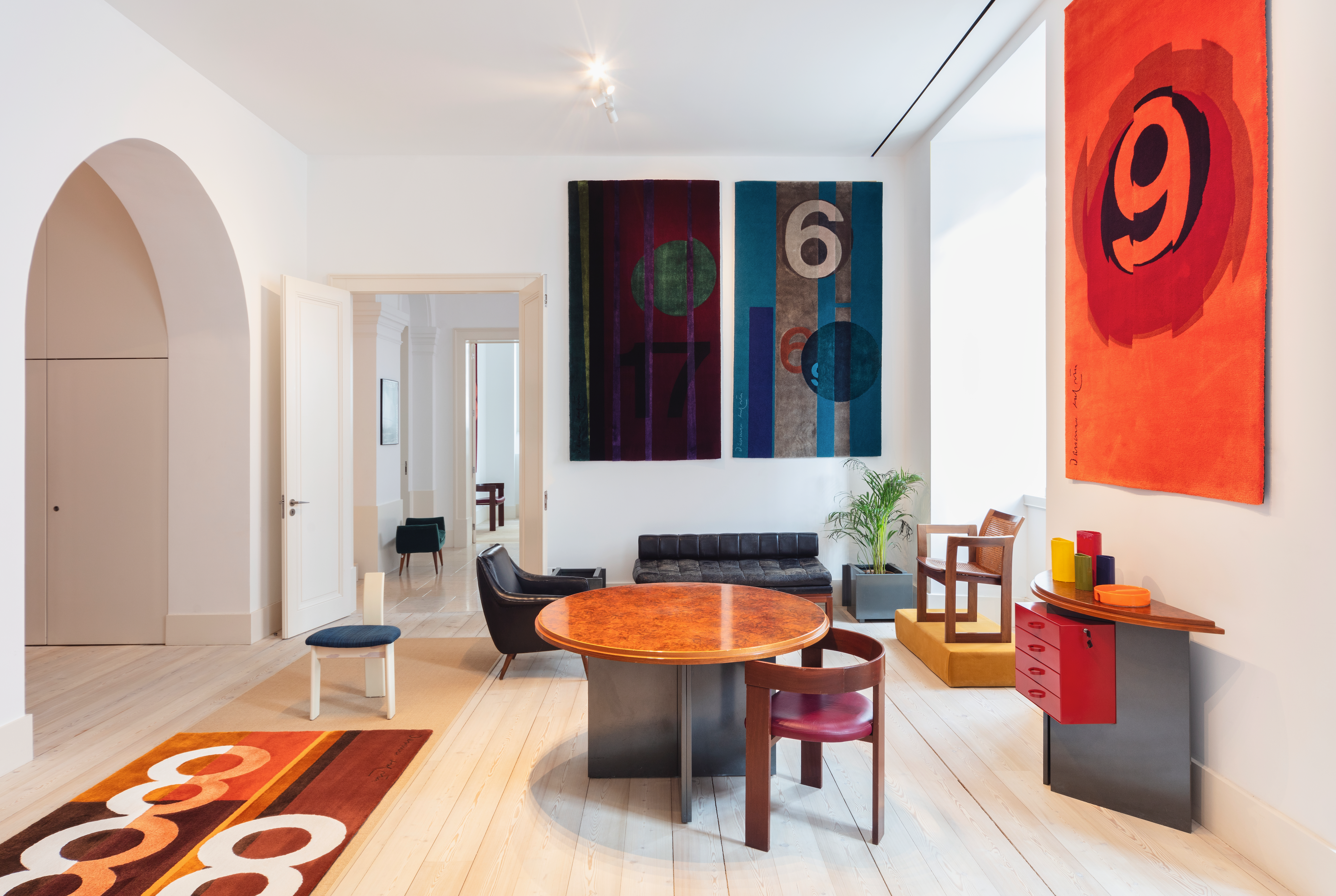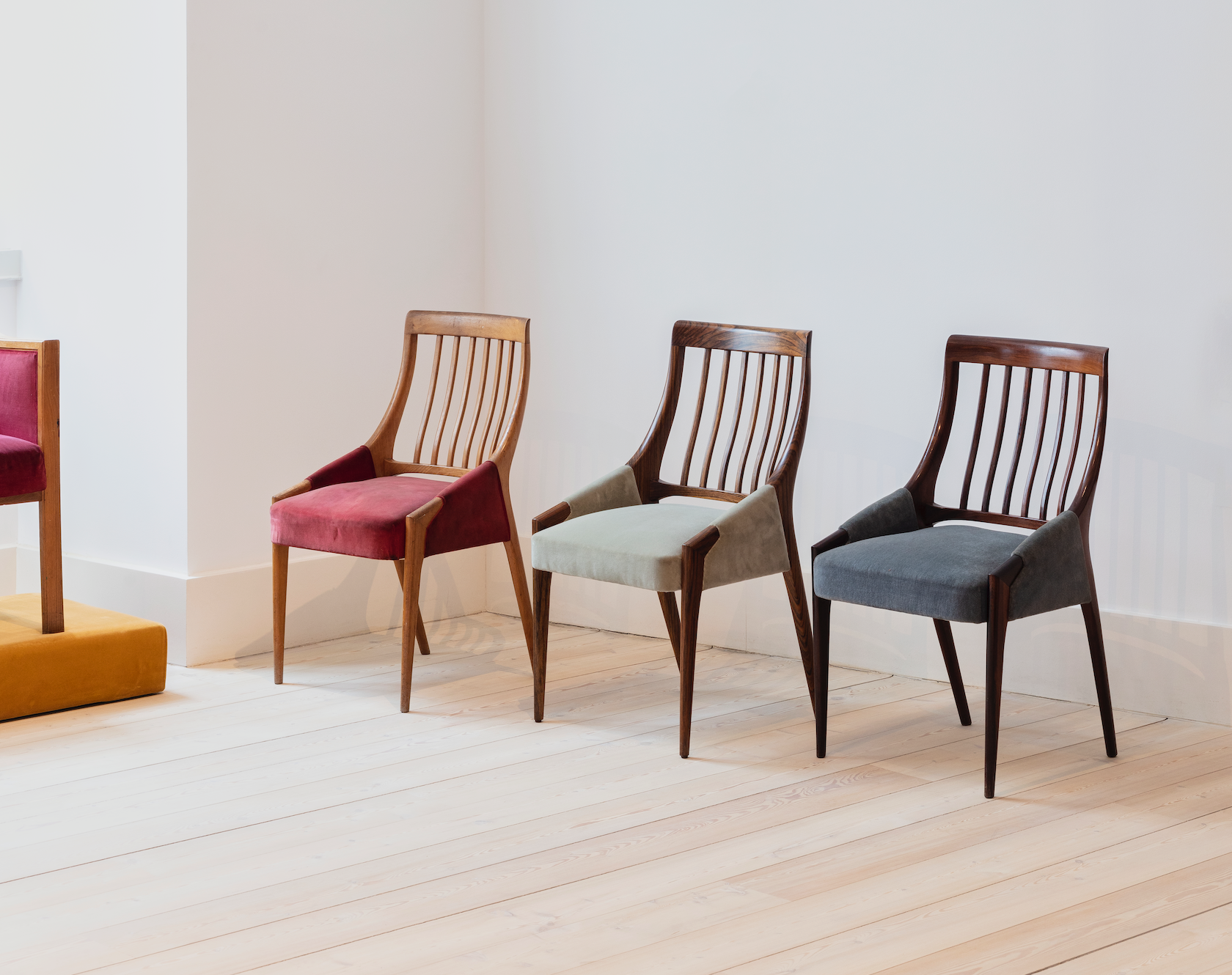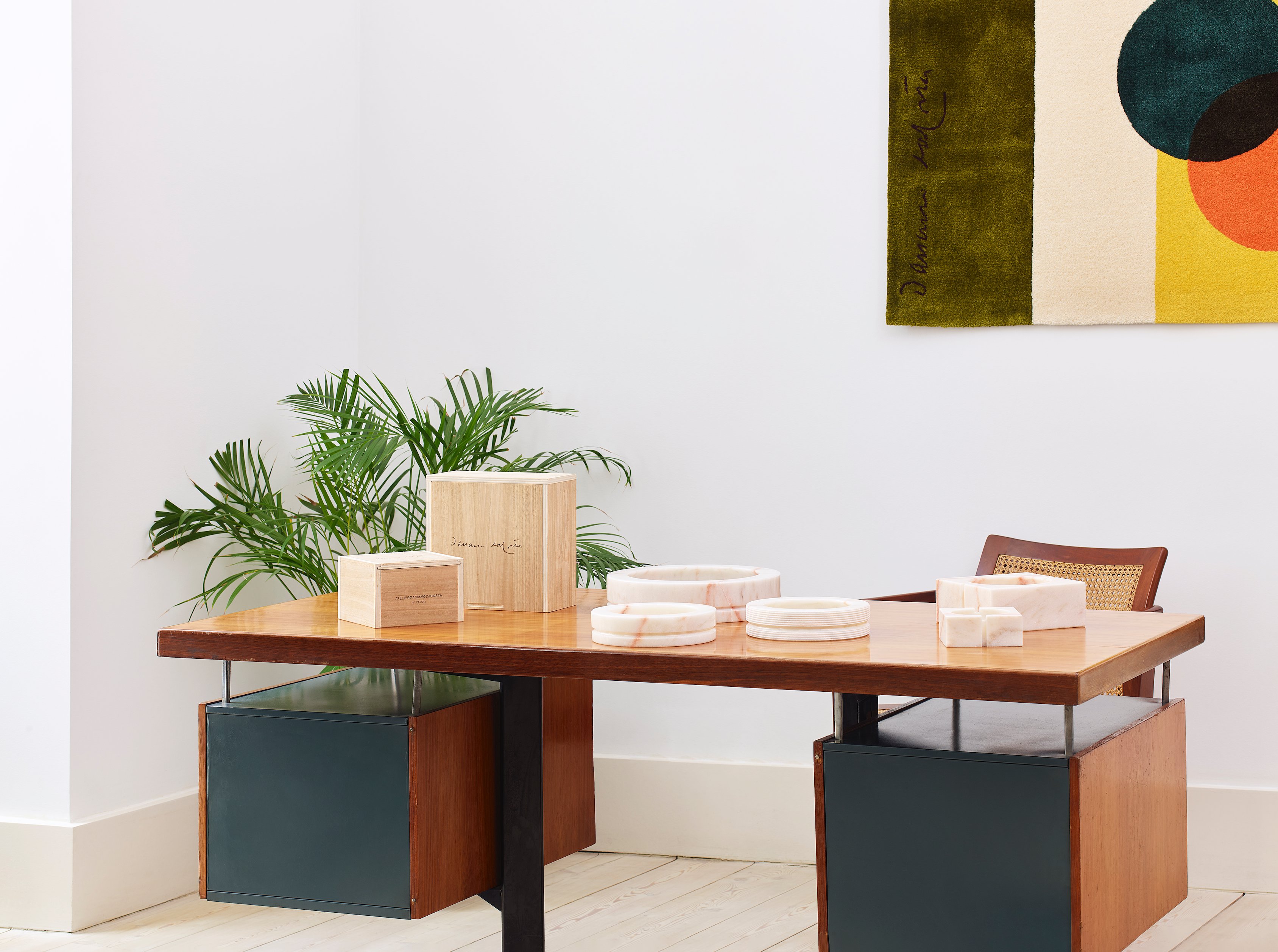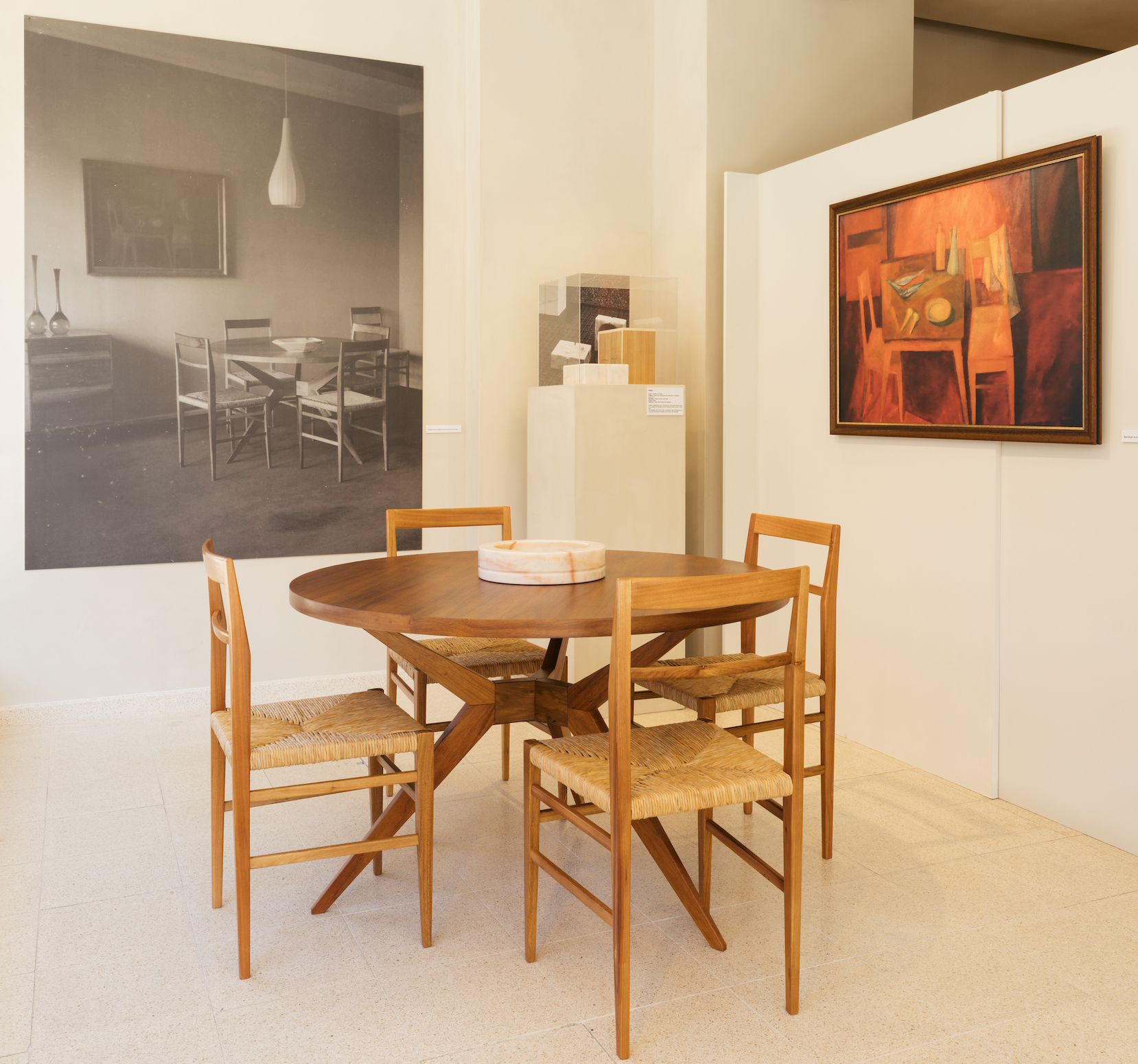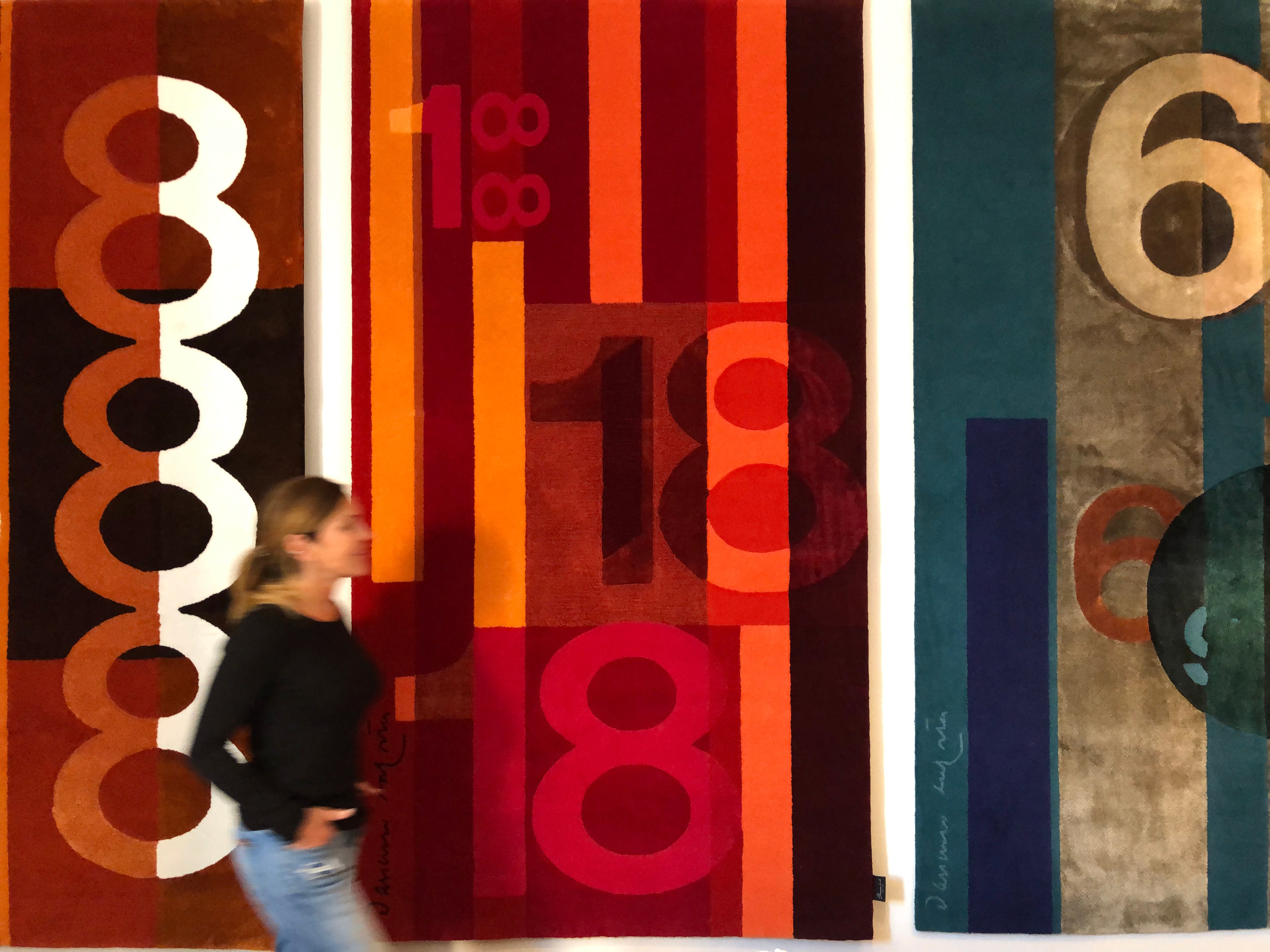
Who is the artist Daciano da Costa?
Daciano da Costa was one of the most prominent designers in Portugal and played a fundamental role in the affirmation and institutionalization of design in the country. The Portuguese architect, painter, designer and teacher was born in Lisbon in 1930 and died in the same city in 2005.
Daciano da Costa began his training at the Escola de Artes Decorativas António Arroio, in Lisbon, later completing the painting course at the Escola Superior de Belas-Artes in the same city. During the 1950s, he collaborated with the architect and painter Frederico George, where he developed a sensitivity for systematic and rational design processes.
In 1959, he established his own studio in Lisbon and abandoned painting to dedicate himself to industrial design, interior design and corporate design. Throughout his career, Daciano da Costa became close to the main international design references and adapted his principles and concepts to the Portuguese context, combining historical knowledge with a contemporary approach.
He was responsible for interior architecture, equipment and furniture projects for several emblematic spaces in Portugal, such as the Rectory of the University of Lisbon, the Calouste Gulbenkian Foundation, the National Library, the Villaret Theater and the Casa da Música. In addition, he collaborated for almost thirty years with Metalúrgica da Longra, developing lines of office furniture.
Daciano da Costa also played an important role in the institutionalization of design in Portugal. He was one of the founding members of the Portuguese Designers Association (APD) and actively participated in the dissemination and promotion of the discipline. As a professor, he contributed to the development of design teaching at the Faculty of Architecture of the University of Lisbon and coordinated the Degree in Design course.
Throughout his career, Daciano da Costa received several awards and distinctions for his projects and contributions to the field of design. In 1998 he was appointed Full Professor and in 2003 he received the title of Doctor Honoris Causa from the University of Aveiro, and a year later from the Technical University of Lisbon. His work was recognized for its aesthetic quality, its balanced approach and its ability to combine tradition with modernity. His contribution was fundamental to the consolidation of design as a professional and academic area in the country.
What are the characteristics of Daciano da Costa's works?
Daciano da Costa's works are characterized by several distinctive features. Here are some of the main ones:- Modernity: Daciano da Costa was one of the pioneers in introducing modern design in Portugal. He incorporated the international trends of the modern movement into his creations, adapting them to local resources and limitations. His works reflected a contemporary aesthetic and an innovative approach.
- Eclecticism: Although rooted in modernity, Daciano da Costa was also known for his eclectic approach. It combined influences from different styles and artistic currents, creating a unique fusion of traditional and contemporary elements. This mix of styles contributed to the uniqueness and originality of his works.
- Balance and harmony: Daciano da Costa sought balance and harmony in his creations. He considered proportion, details, materials, colors and textures as key elements in the search for visual and sensorial harmony. Through a careful combination of visual elements.
- Functionality and pragmatism: As an industrial designer, Daciano da Costa was committed to the functionality and practicality of his creations. He designed furniture, equipment and objects that met the user's needs, combining aesthetics and usability. His pragmatism was evident in his realistic and sensible approach to design.
- Integration with the built environment: Daciano da Costa had a comprehensive view of design, understanding that all objects are part of the construction of the human environment. His works considered the context in which they were inserted, both in physical and cultural terms. He sought to create objects that harmoniously relate to their surroundings, complementing and enriching the built environment.
What were Daciano da Costa’s influences?
Daciano da Costa was influenced by various artistic trends and designers throughout his career. Here are some of the key influences that have shaped his work:- Modern Movement: Daciano da Costa was deeply influenced by the ideas and aesthetics of the Modern Movement, which emerged at the beginning of the 20th century. He was inspired by the works of modernist architects and designers, such as Le Corbusier, Ludwig Mies van der Rohe and Charles Eames. The movement emphasized functionality, simplicity and contemporary aesthetics, principles that Daciano da Costa incorporated into his own creations.
- Bauhaus: The Bauhaus, a school of design, art and architecture founded in Germany, had a significant influence on Daciano da Costa. Through Bauhaus principles, such as the integration of arts, experimentation with materials and the fusion of art and industry, he incorporated an interdisciplinary and pragmatic approach to his work.
- Traditional Portuguese crafts: Daciano da Costa was also inspired by the artisanal and cultural traditions of Portugal. He valued traditional production methods and local materials, incorporating them into his creations in a contemporary way. This fusion between traditional craftsmanship and modern aesthetics resulted in a distinctive style in his works.
- Scandinavian architecture and design: Daciano da Costa was also inspired by Scandinavian architecture and design. He appreciated the simplicity, functionality and minimalism characteristic of these currents, and incorporated them into his own style. The Scandinavian aesthetic influenced his approach to form, materials and color palette.
The recurring themes and concepts in Daciano da Costa's work
"When a form is produced, regardless of fulfilling a function, it is intended for enjoyment. It is precisely there, in this dimension, that it is subject to aesthetic evaluations. However, I consider design to be an aesthetics of ethics." Daciano da Costa, 1998. Design and Malaise.”In Daciano da Costa's work, some recurring themes and concepts can be identified that permeate his creations. These themes reflect his vision on design, architecture and society. Here are some of the themes and concepts most present in his work:
- Functionality: Daciano da Costa valued functionality in his creations. He believed that design should meet people's practical and ergonomic needs, looking for intelligent and efficient solutions. His works were designed to be used and appreciated in everyday life, combining form and function in a balanced way.
- Integration between art and industry: Daciano da Costa shared the modernist ideal of integrating art and industry. He sought to create products and spaces that were accessible to the greatest number of people, incorporating industrial techniques and mass production. At the same time, it did not compromise on aesthetic and artistic value, balancing mass production with quality and careful design.
- Valuing crafts and local culture: Even with his penchant for industrial design, Daciano da Costa valued cultural roots and traditional crafts. He incorporated elements and techniques of local craftsmanship into his creations, combining tradition and contemporary times. This appreciation of crafts contributed to the preservation of cultural identities and the creation of their own language in their works.
- Contemporary aesthetic: Daciano da Costa's works reflected a contemporary and updated aesthetic. He explored simple and geometric shapes, clean lines and balanced proportions. His minimalist and sophisticated approach gave his creations a timeless aspect, adopting a clear and direct visual language. Proof of this is that Daciano da Costa's pieces are still admired and used today.
How did Daciano da Costa challenge traditional values?
Daciano da Costa was a Portuguese designer and architect who challenged traditional values through his innovative creations and bold approach. His revolutionary vision of design and architecture broke with established conventions, questioned norms and found new perspectives.
Daciano da Costa defended the importance of designing objects and spaces that met people's practical needs. He believed that design should be aimed at everyday life, providing intelligent and efficient solutions.
Furthermore, Daciano da Costa challenged traditional values by integrating art and industry. While artisanal production was widely valued, it invested in mass production and industrial techniques.
Another way in which Daciano da Costa valued local crafts and traditional culture. While many designers at the time turned to international design, Daciano da Costa sought to incorporate elements and techniques of Portuguese craftsmanship in his works. This approach celebrated cultural identity and contributed to the preservation of traditions, challenging the idea that contemporary design should be dissociated from local roots. An example of this was the design of the wooden furniture system intended for the homes of bank employees at Banco Nacional Ultramarino (1963), located in areas with restricted resources - in the interior of the country or in the territories of former Portuguese colonies. The project was developed with a view to the possibility of carrying out construction in the destination locations using materials that would be predictably available there. Thus, the materials used in the construction of the BNU Chair and the option for artisanal construction, solid wood and wood, are justified.
What is Daciano da Costa's artistic legacy?
Daciano da Costa's artistic legacy is remarkable and far-reaching, both in the fields of design and architecture. His innovative contributions and revolutionary approach left a lasting mark on the art scene and influenced subsequent generations.
In architecture, Daciano da Costa left his mark on highly relevant projects. He designed commercial, residential, institutional and cultural buildings: Rectory of the University of Lisbon 1960 - Teatro Villaret, Lisbon 1964 - Biblioteca Nacional, Lisbon 1968 - Casino Estoril, Lisbon 1966 - Fundação Calouste Gulbenkian, Lisbon 1966 - Hotel Alvor-Praia, Algarve 1967 - Hotel Madeira Hilton Palace, Funchal 1970 - National Civil Engineering Laboratory 1971 - Hotel Altis, Lisbon 1971 - Hotel Penta, Lisbon 1975 - Casino Park Hotel, Funchal 1972 - Air terminal 2, Lisbon 1980 - Caixa Geral de Depósitos Agency, Rossio 1983 - Centro Cultural de Belém, Lisbon 1990 - Coliseu dos Recreios, Lisbon - Paços do Concelho, Lisbon 1997 - Madeira Crown Plaza Resort Hotel, Funchal 1998 - Calouste Gulbenkian Foundation, Lisbon 1999 - Casa da Música, Porto 2005.
In some of these spaces we can still see traces of Daciano da Costa's project. While still alive (2003), Daciano da Costa signed a Lease Agreement with the Portuguese State for his documentary archive, testimony to the public relevance of his creative activity and part of the country's cultural heritage.
In 2013, eight years after Daciano da Costa's death, Atelier Daciano da Costa took on new management with Inês Cottinelli, one of his five daughters, with the mission of preserving and communicating his legacy, allowing Daciano's memory lasts nationally and internationally.
The Atelier has drawn up an ambitious plan that it has been developing through actions that range from heritage conservation and institutional partnerships with cultural entities and museums to communication for dissemination in national and international events and exhibitions, to the production of reissues aimed at become a sustainable business model.
The reissues of pieces that were originally designed by Daciano da Costa for specific works aim to revalue objects that can be introduced today in new environments, both by professionals and private clients, thus promoting new readings of existing objects.
The furniture in Casa da Música (2005), designed by Rem Koolhaas, was the last work that Daciano da Costa saw in his lifetime and is an example for us that this is possible.
As part of the Atelier Daciano da Costa project to communicate and extend the work of Daciano da Costa, it is now present in the following museums:
MUDE – Design and Fashion Museum, Francisco Capelo Collection. Museum Collection Deposit consisting of a set of design pieces, models and models from the private collection.
Center Pompidou, Center National d'Art et de Culture - In 2015, a donation contract was signed between this institution and the studio, consisting of a design piece, the Boroa II armchair and six original drawings of the model from the private collection, becoming integrate the Museum’s permanent collection.
Vitra Design Museum - In 2022, a Donation Contract was signed between the Museum and Atelier Daciano da Costa for two design pieces from the studio's private collection: a reissue of the Alvor chair (1967) and the original Quadratura chair (1971) passing to incorporate the collection of what is considered one of the most important design museums.
Daciano da Costa is now the first Portuguese Designer to join the Vitra Design Museum
Daciano da Costa's artistic legacy is present in his pioneering contribution to industrial design, his innovative and functional architecture, and his lasting influence on design ideas and philosophies. His bold vision and commitment to functionality, sustainability and the appreciation of traditions continue to inspire and shape art and design to this day.

